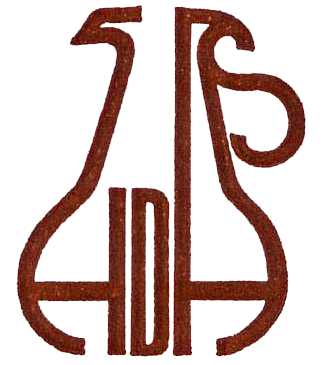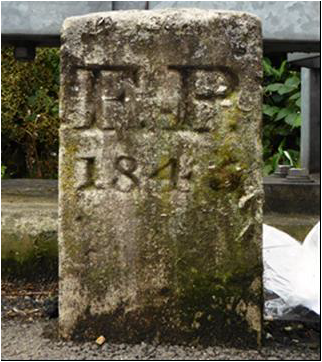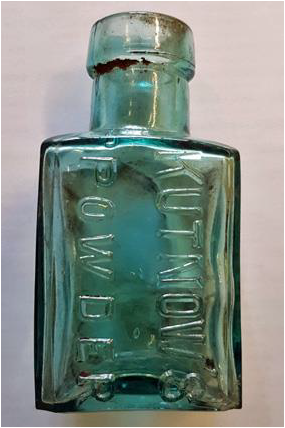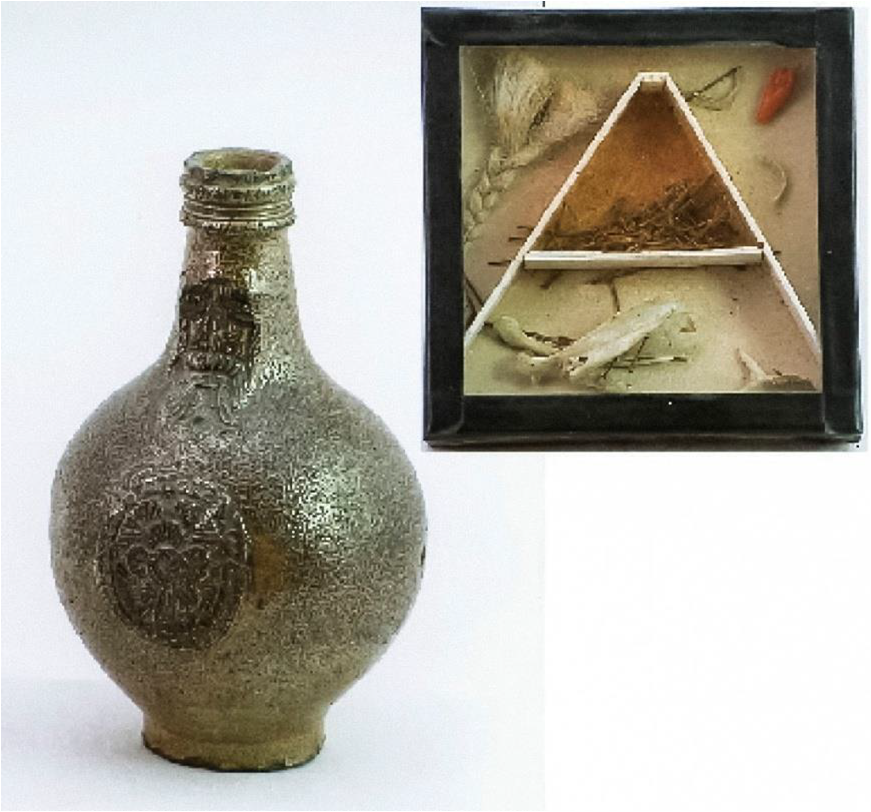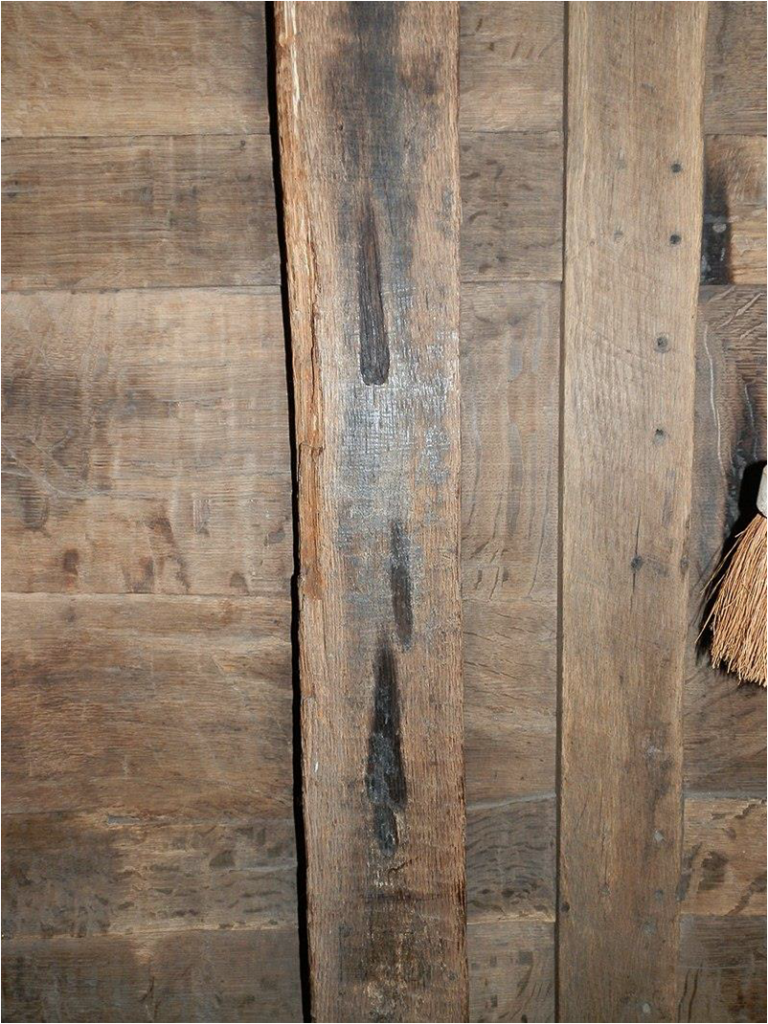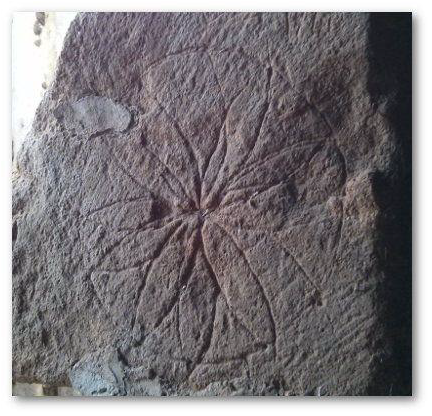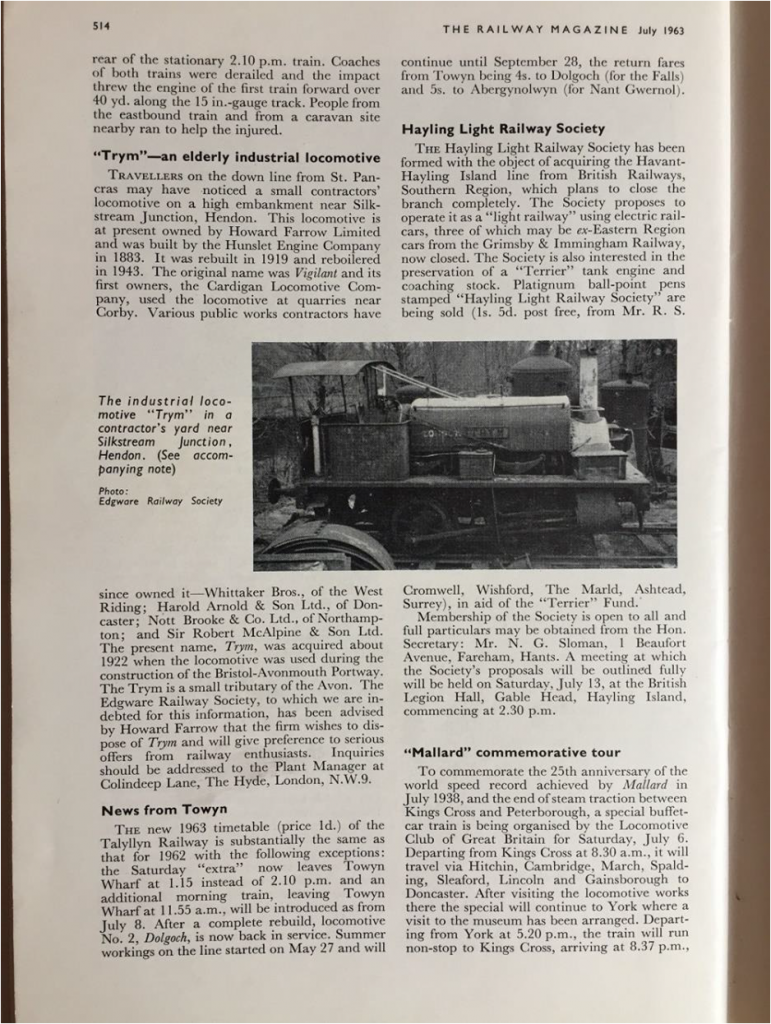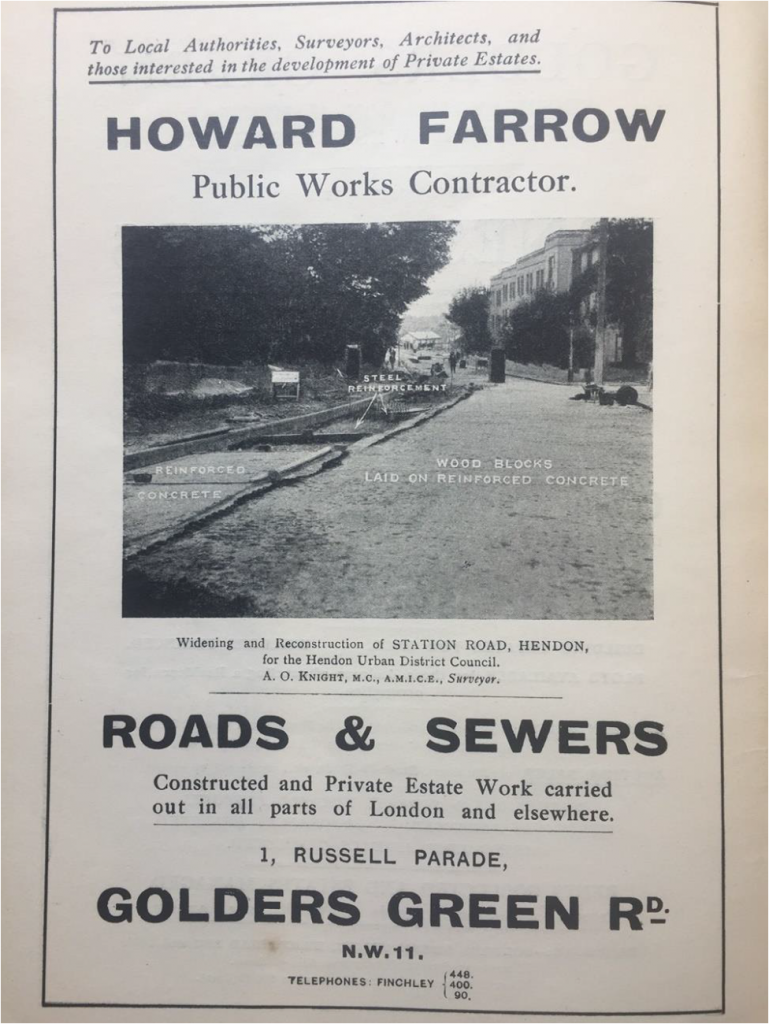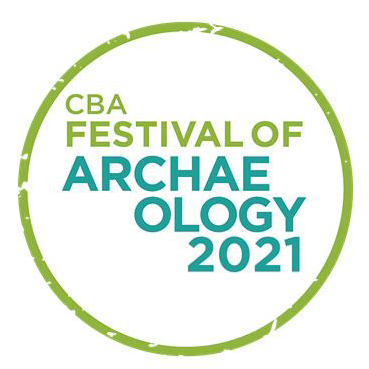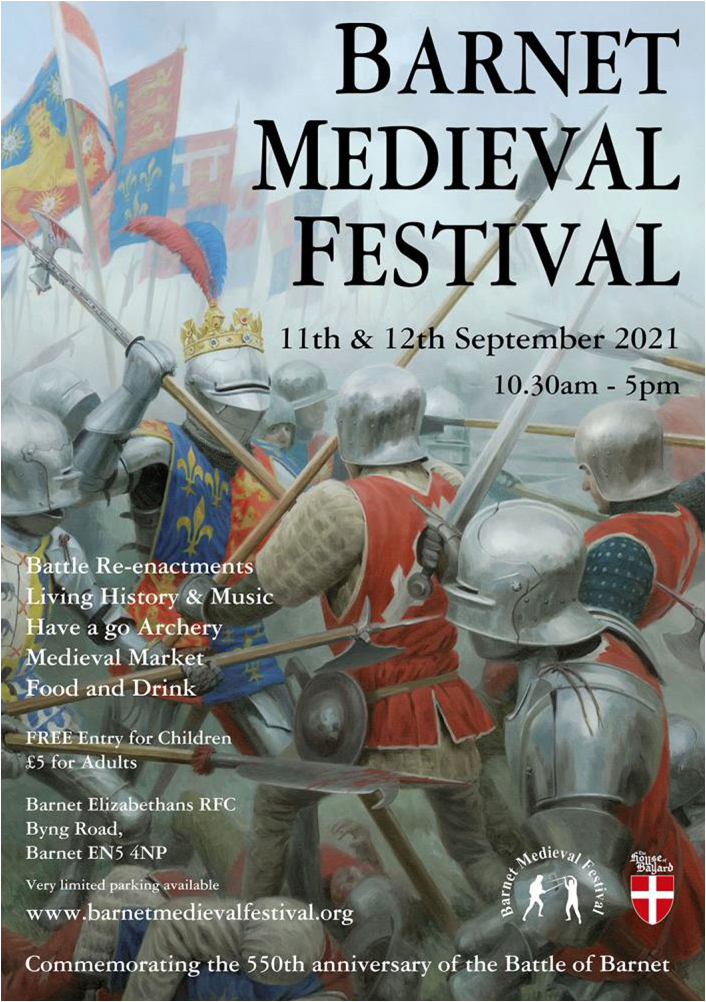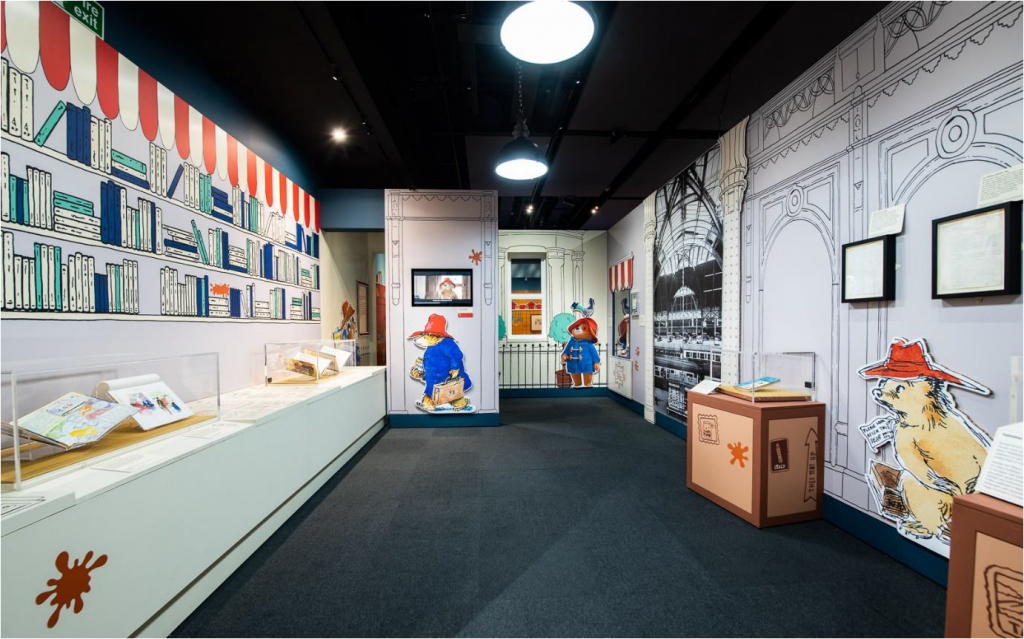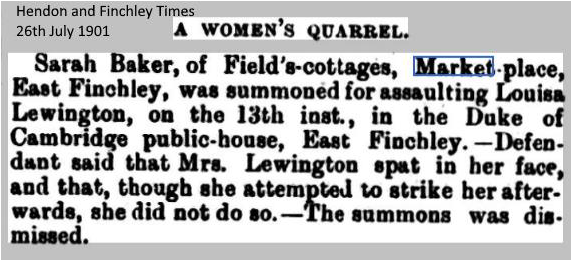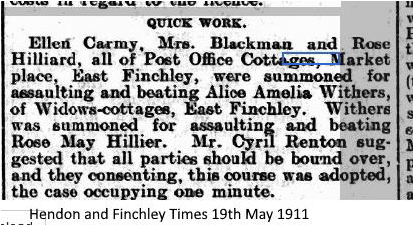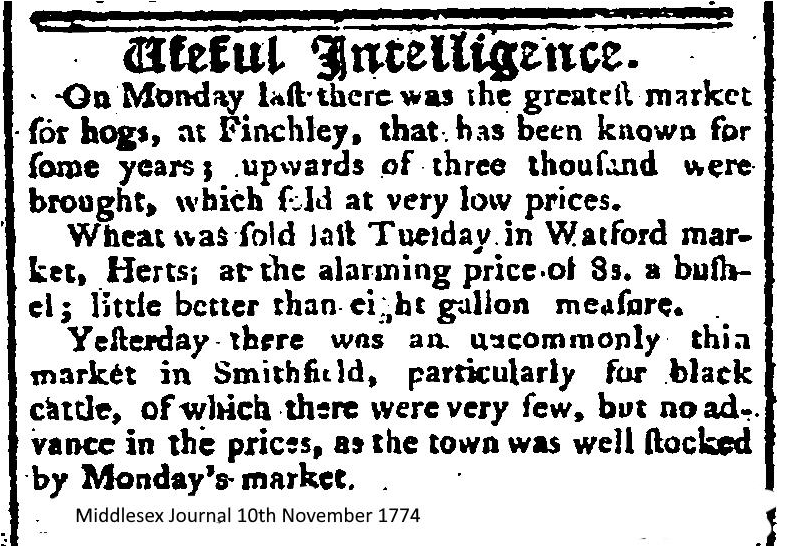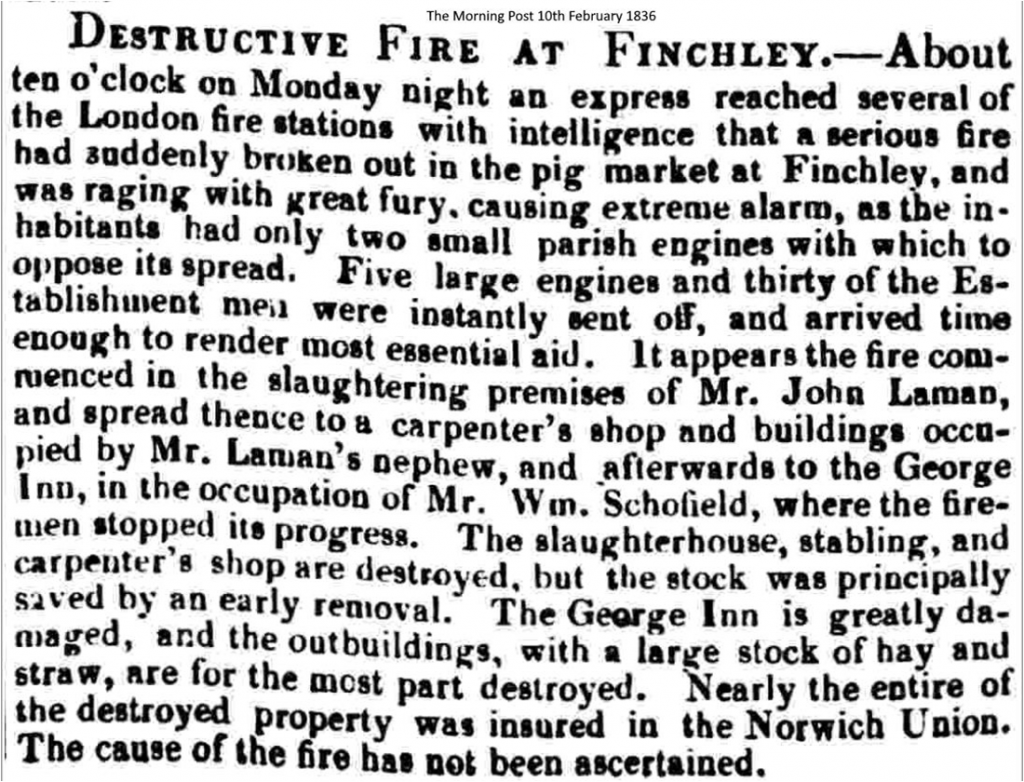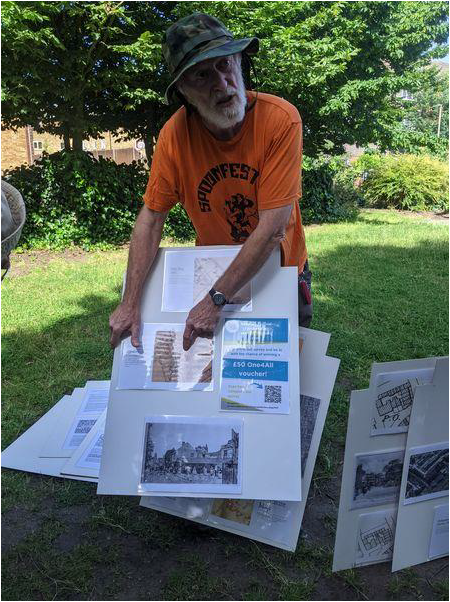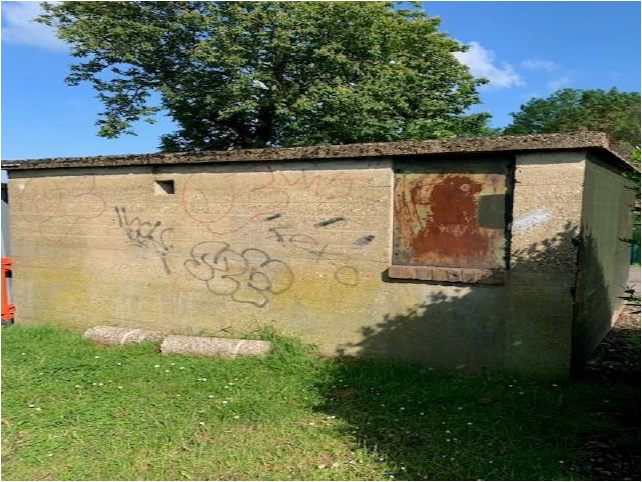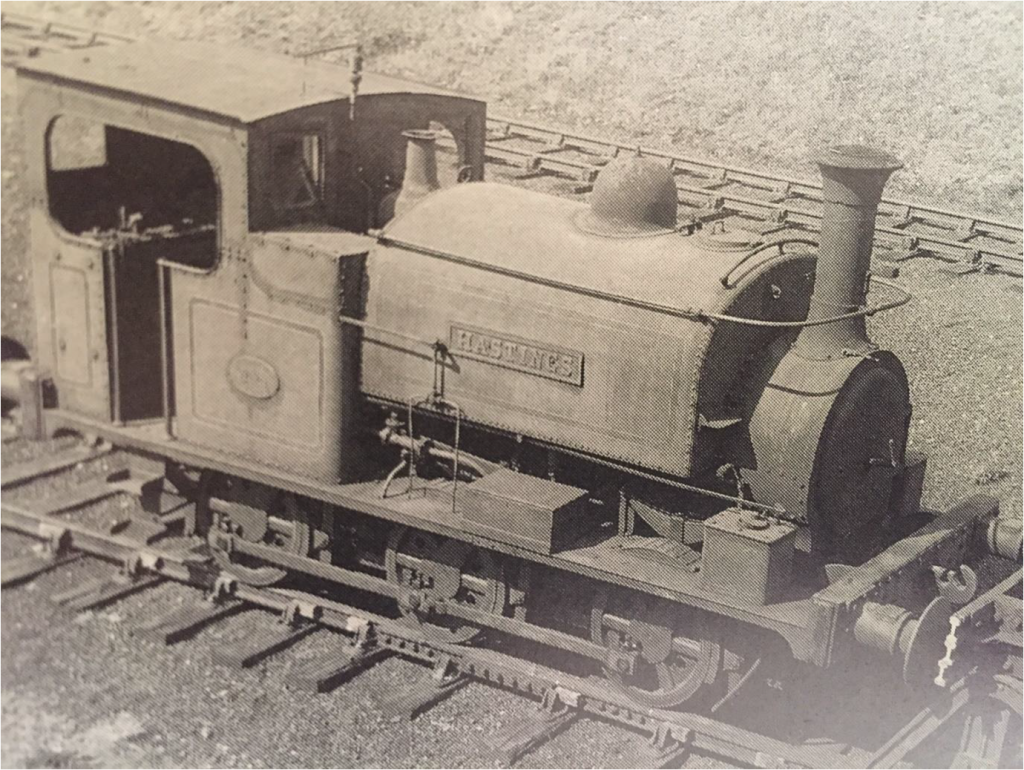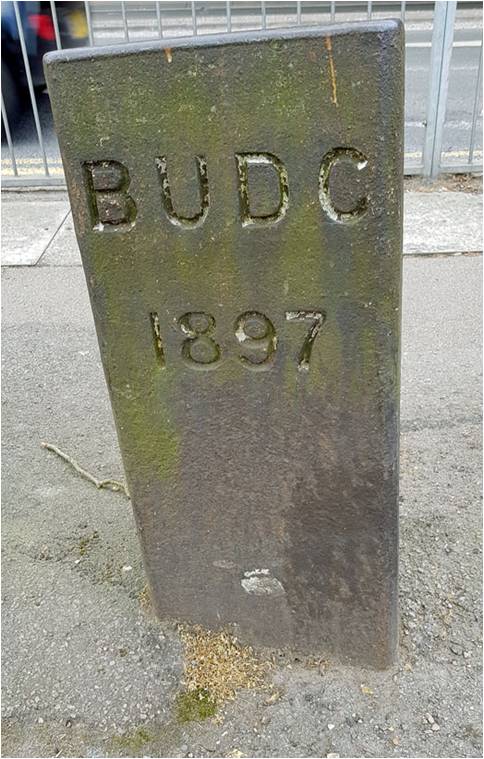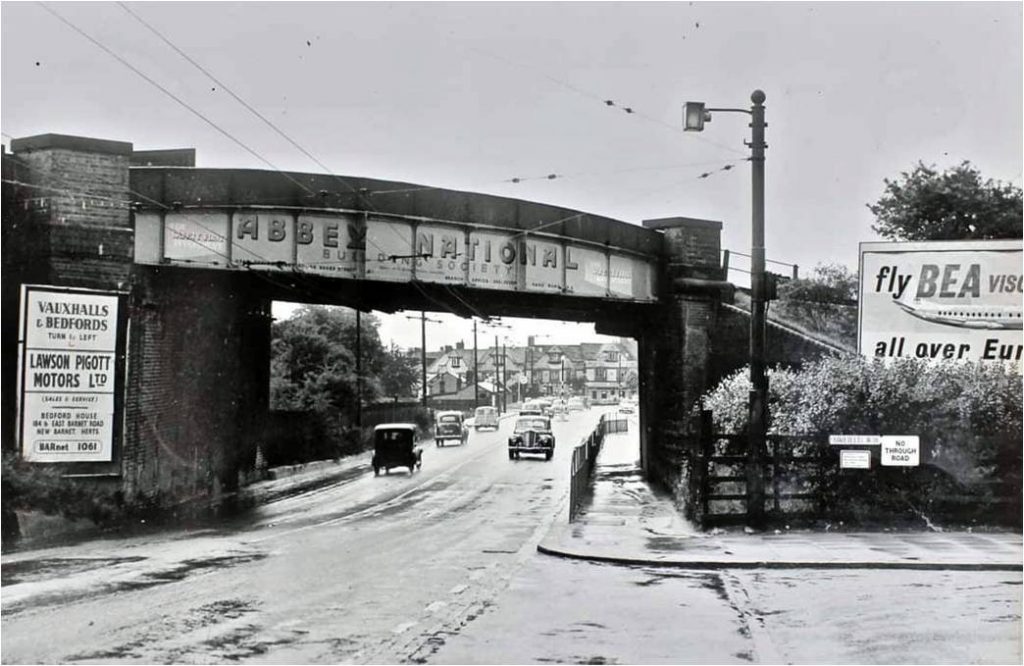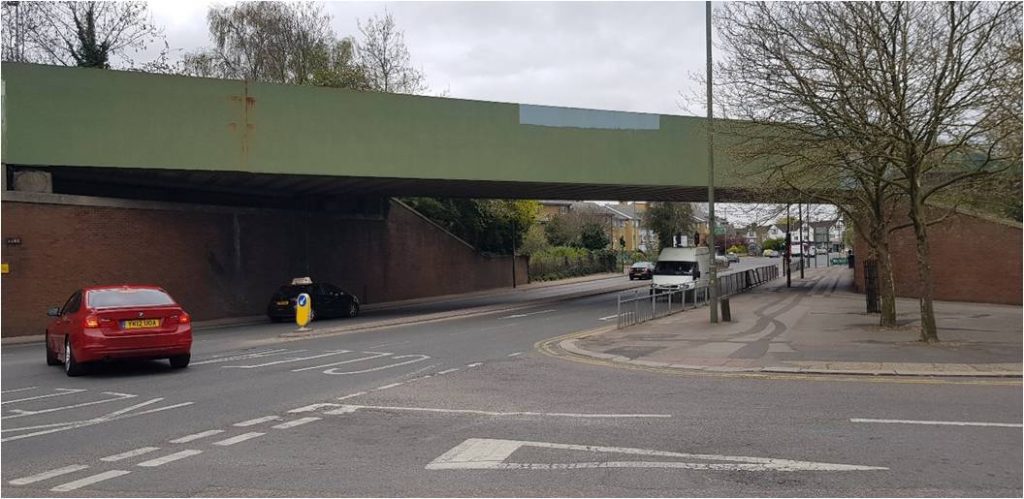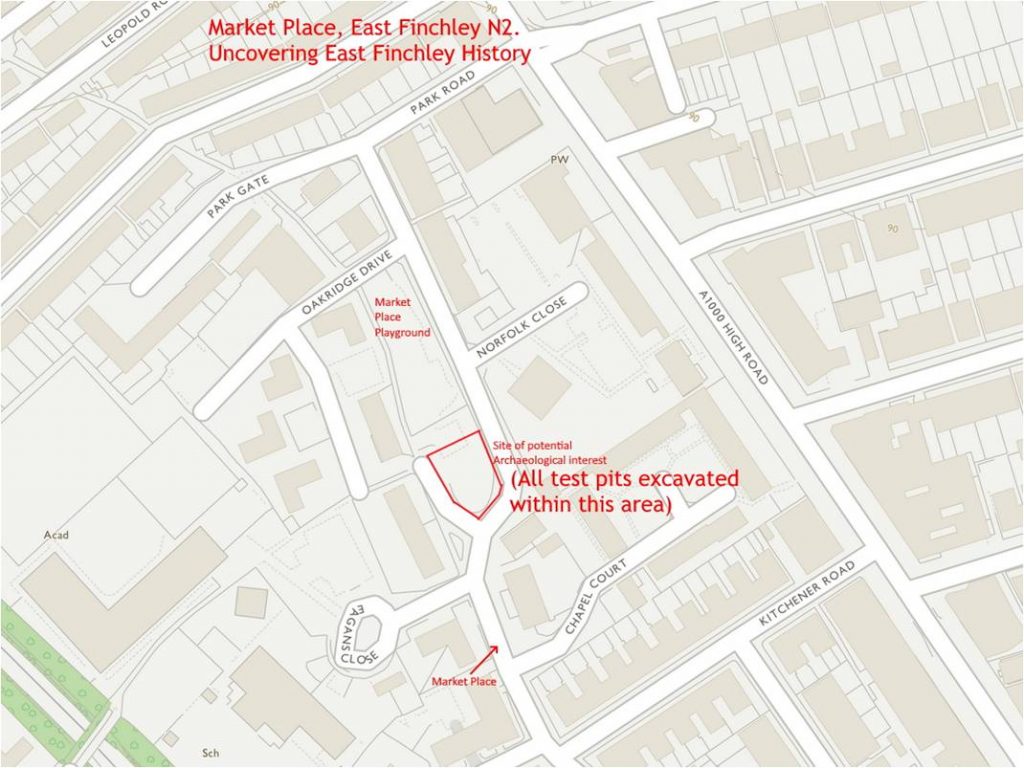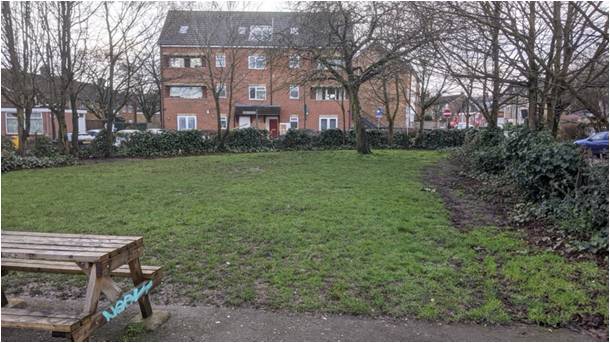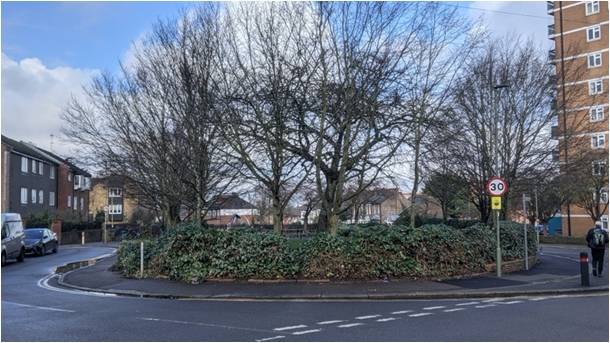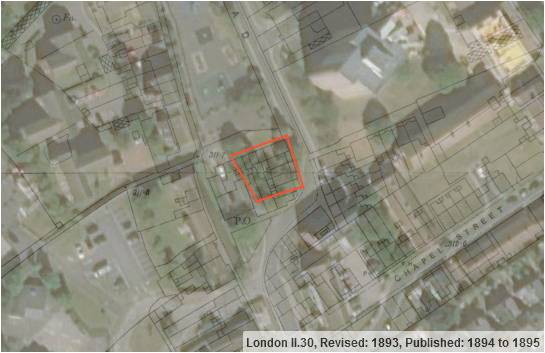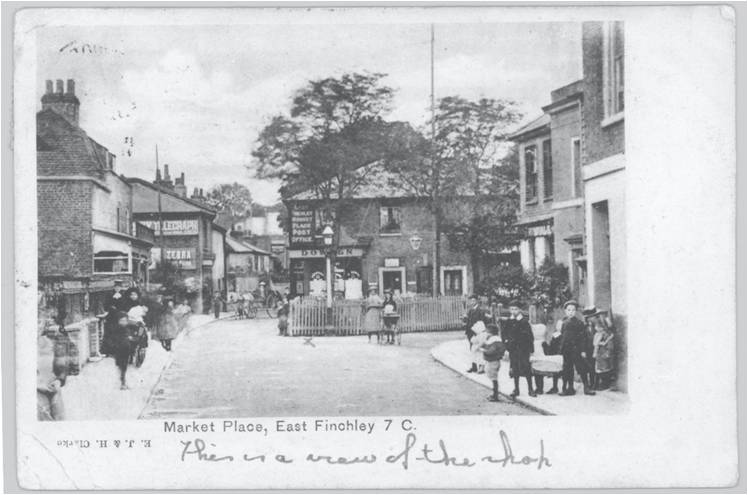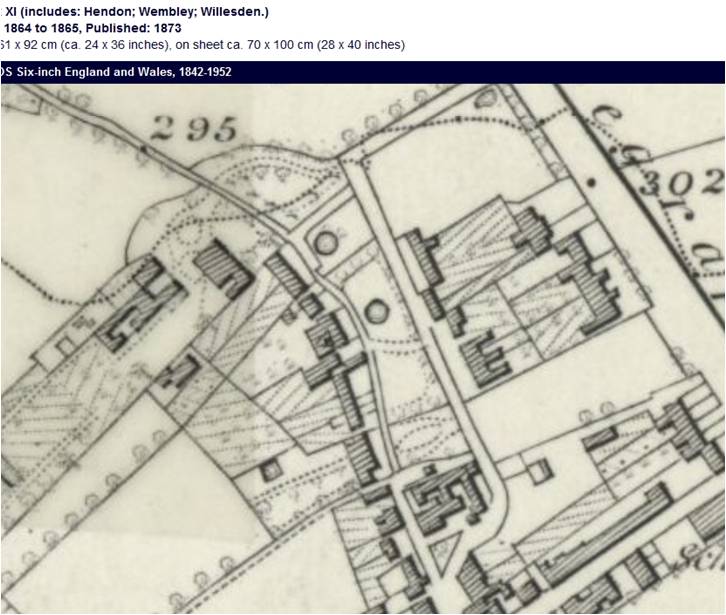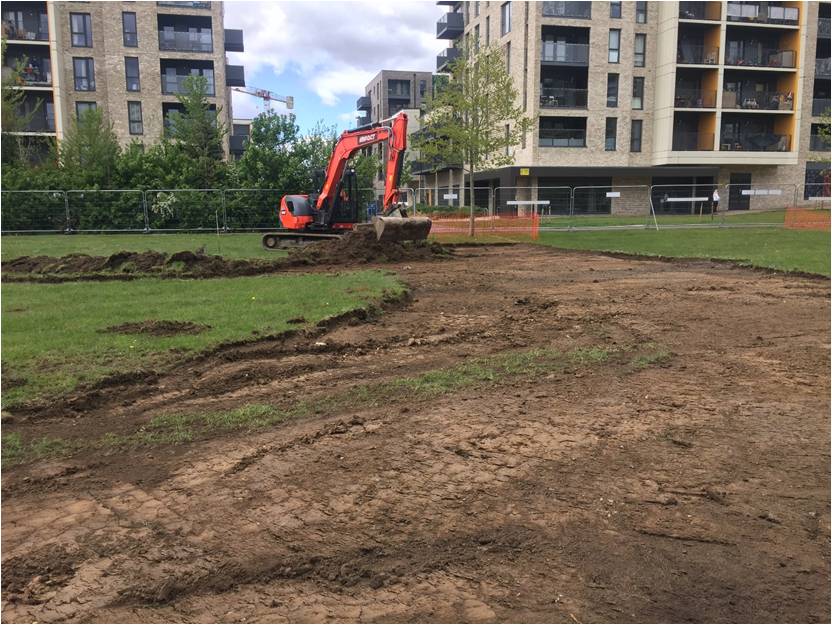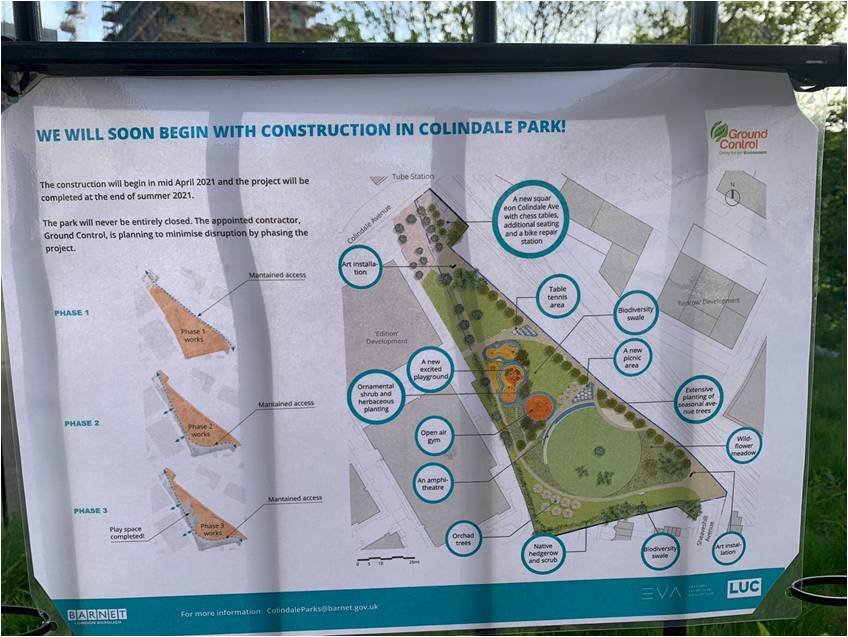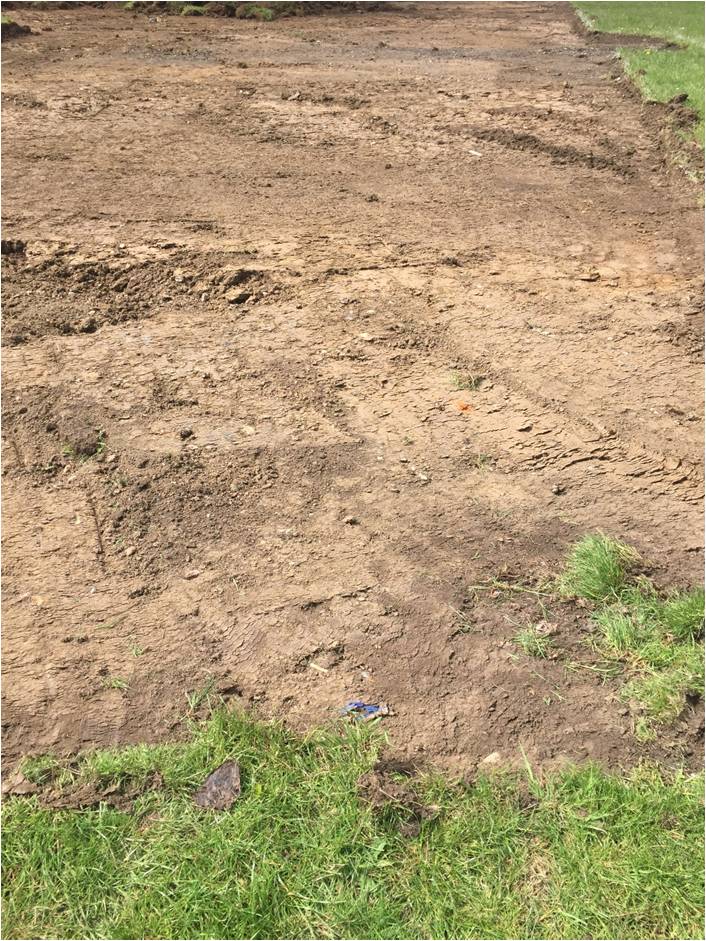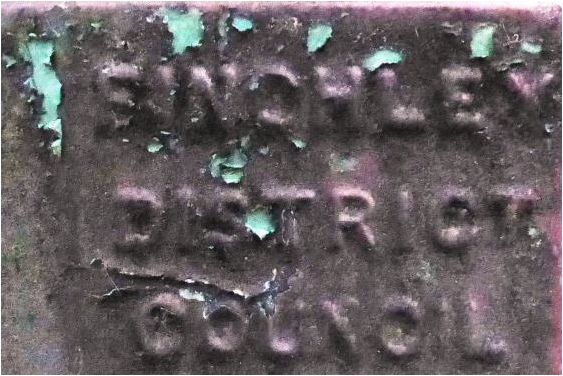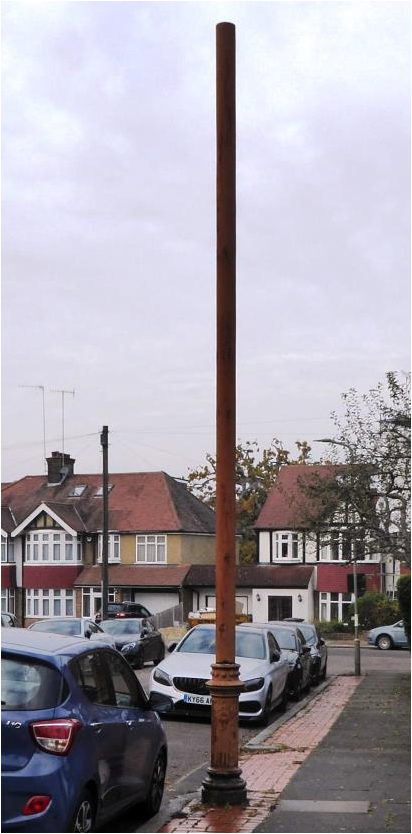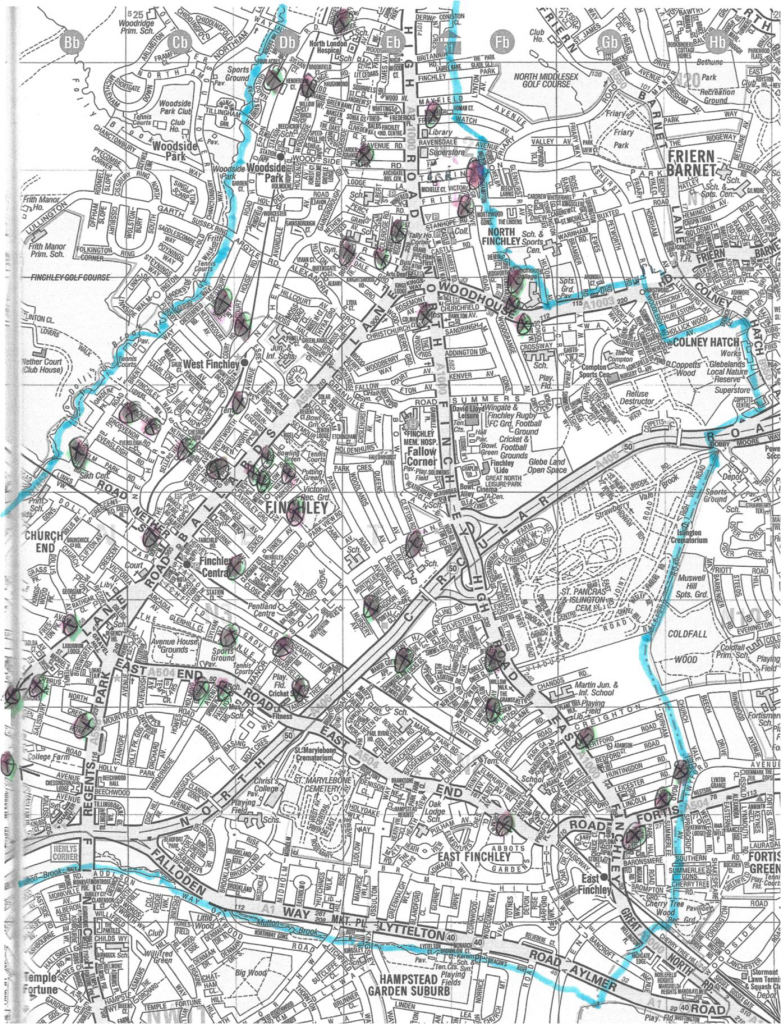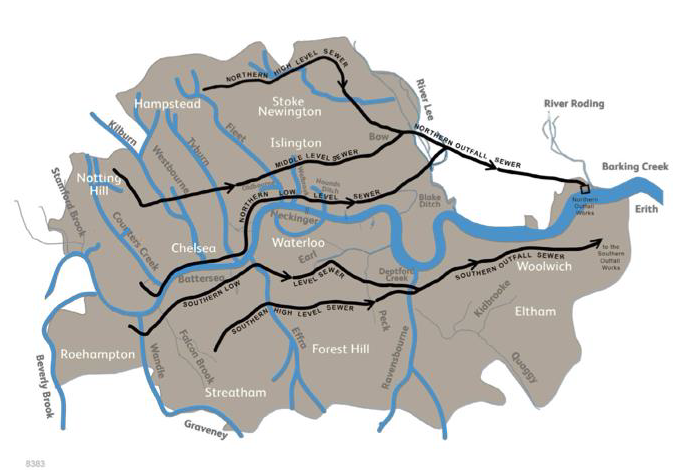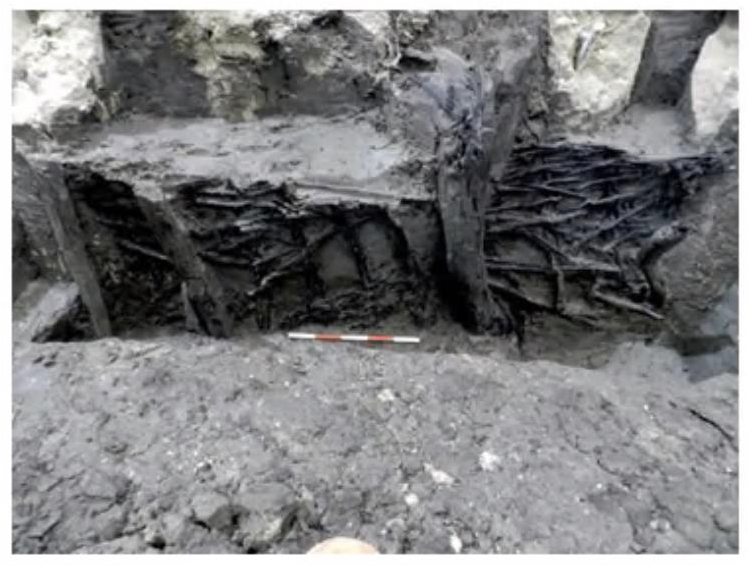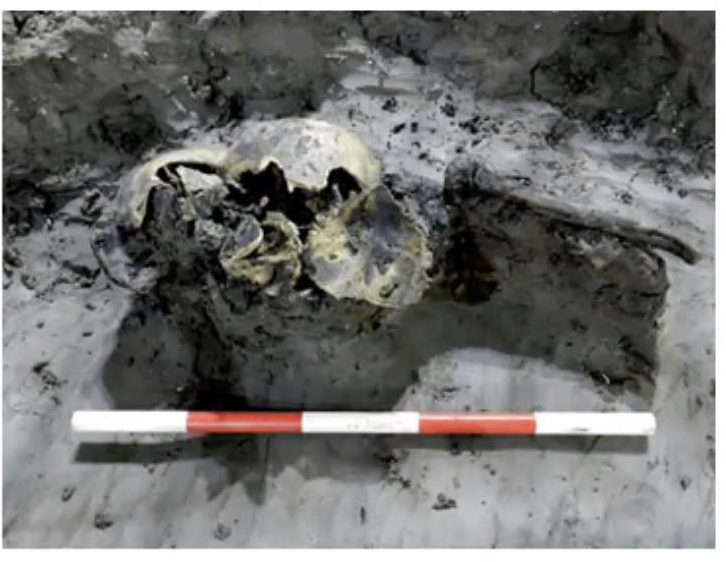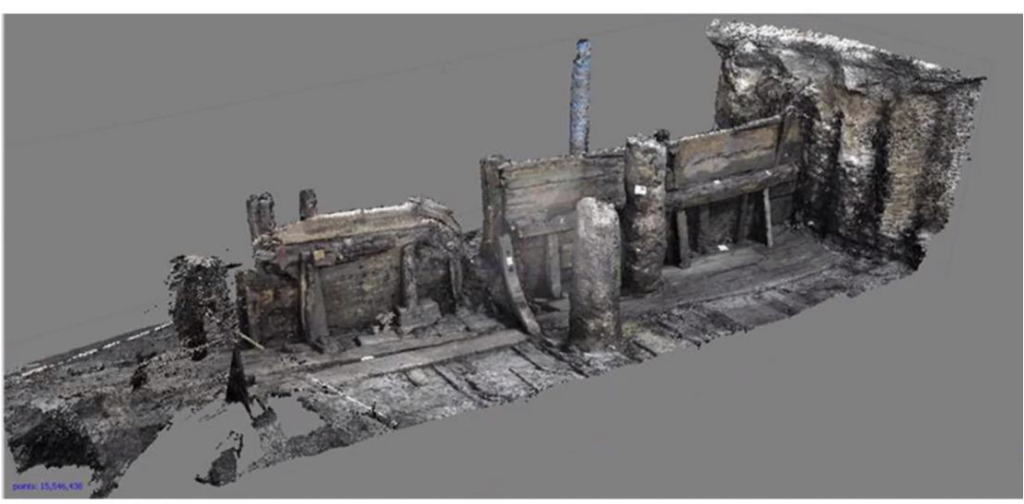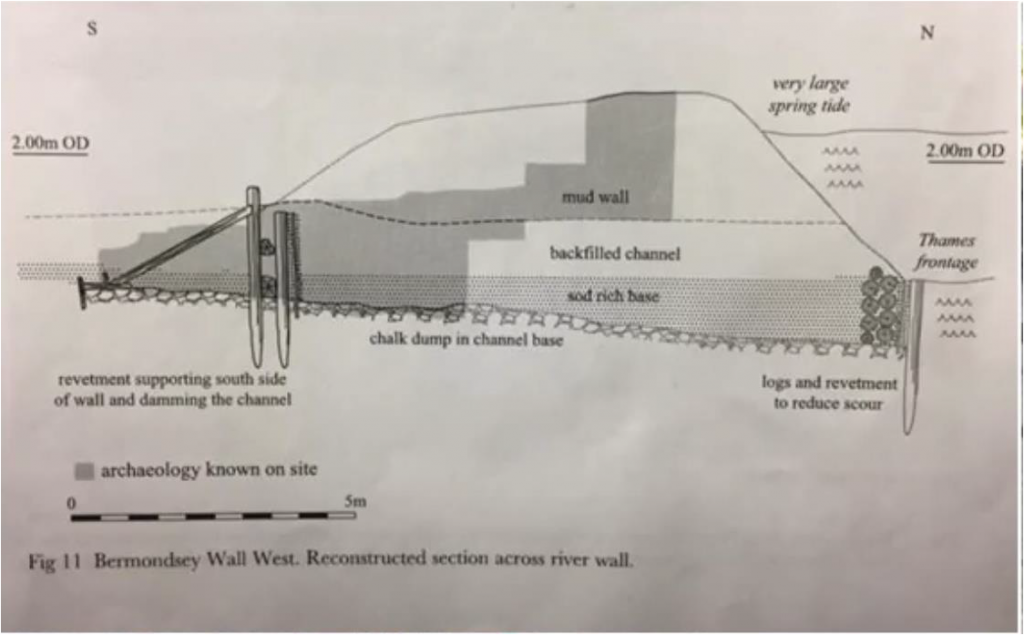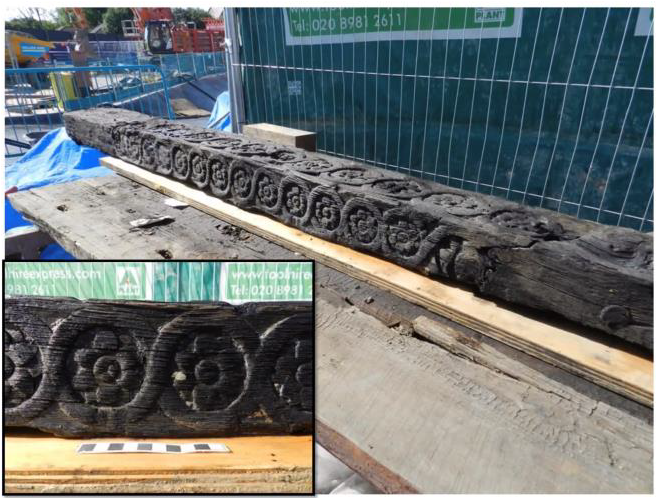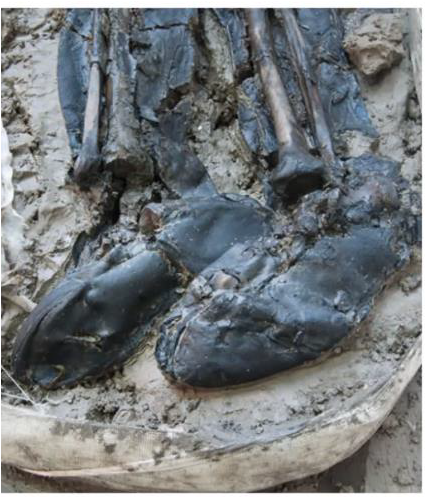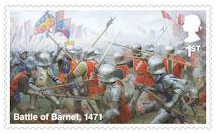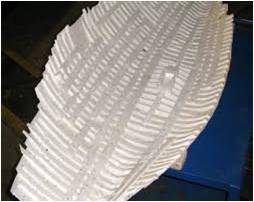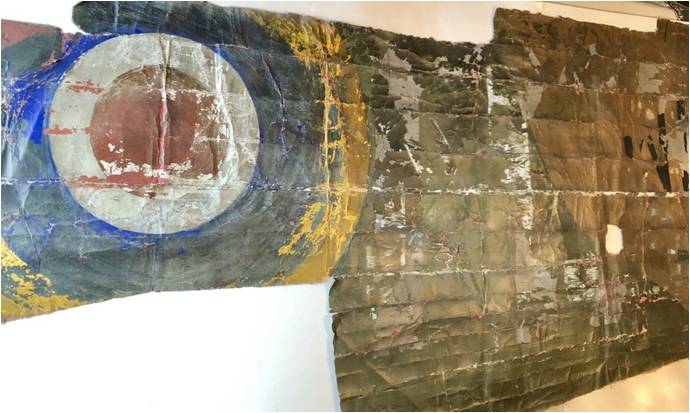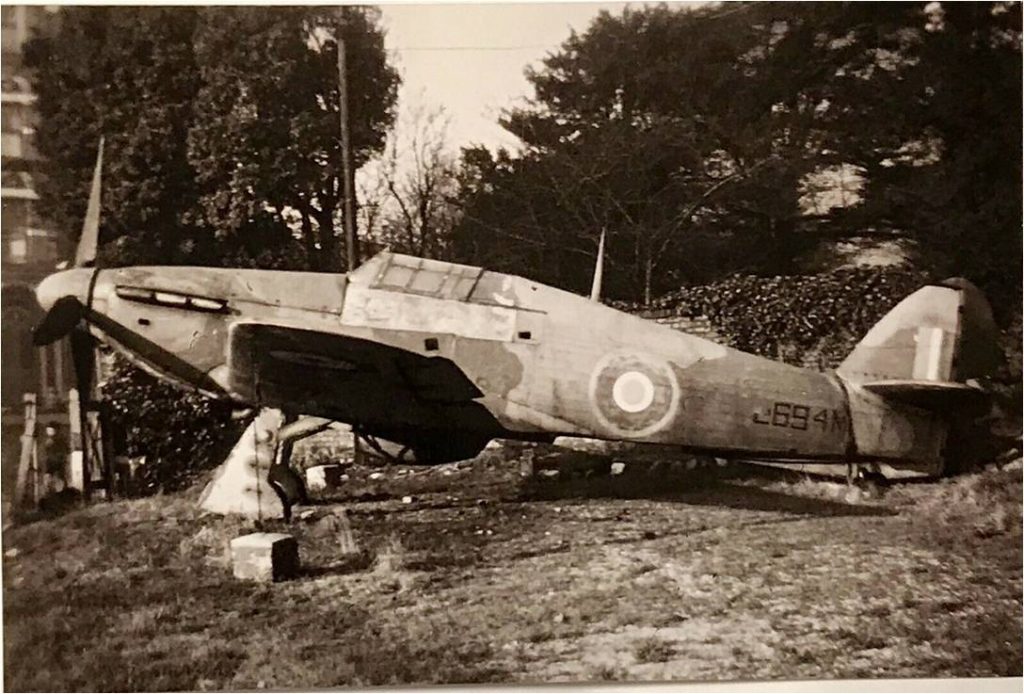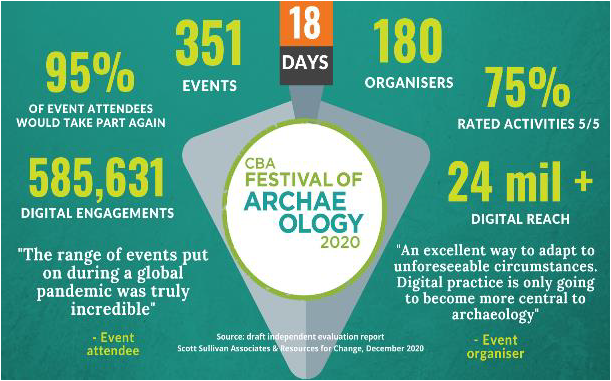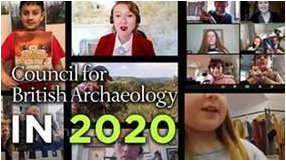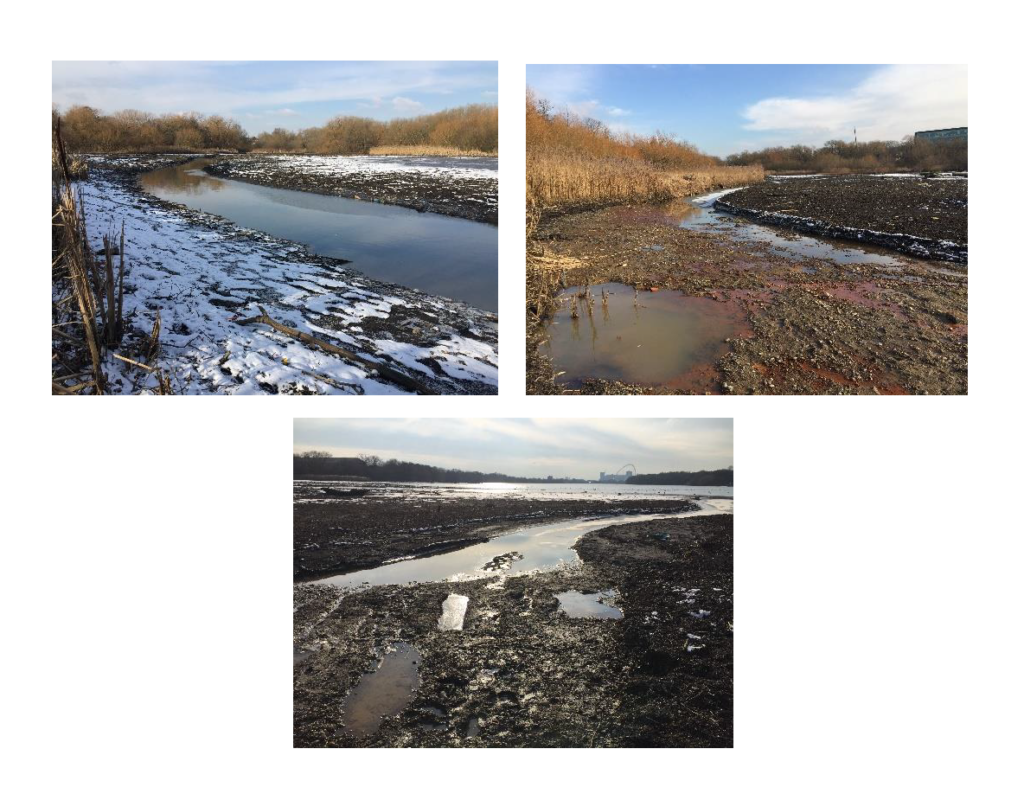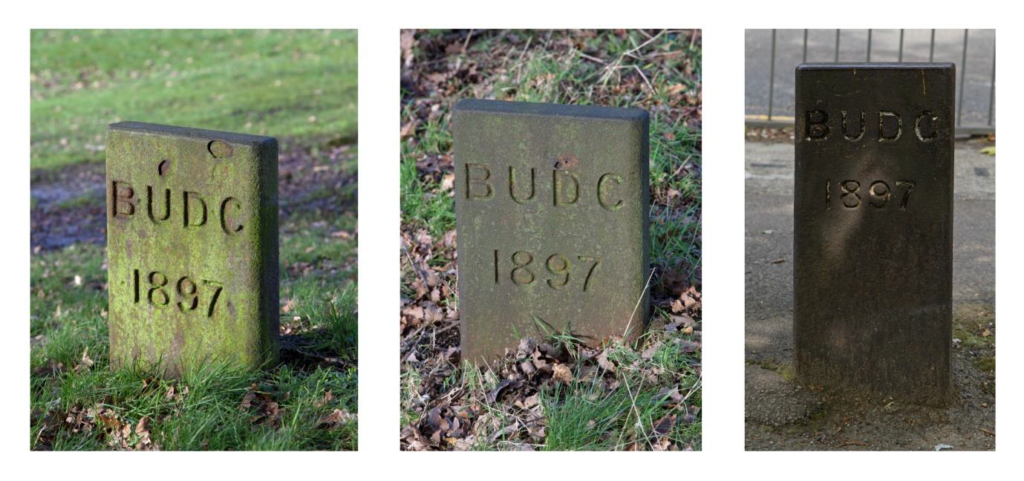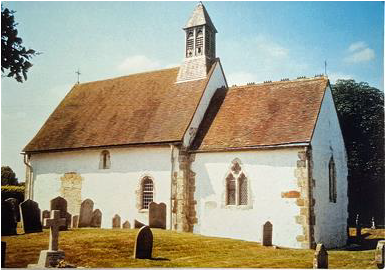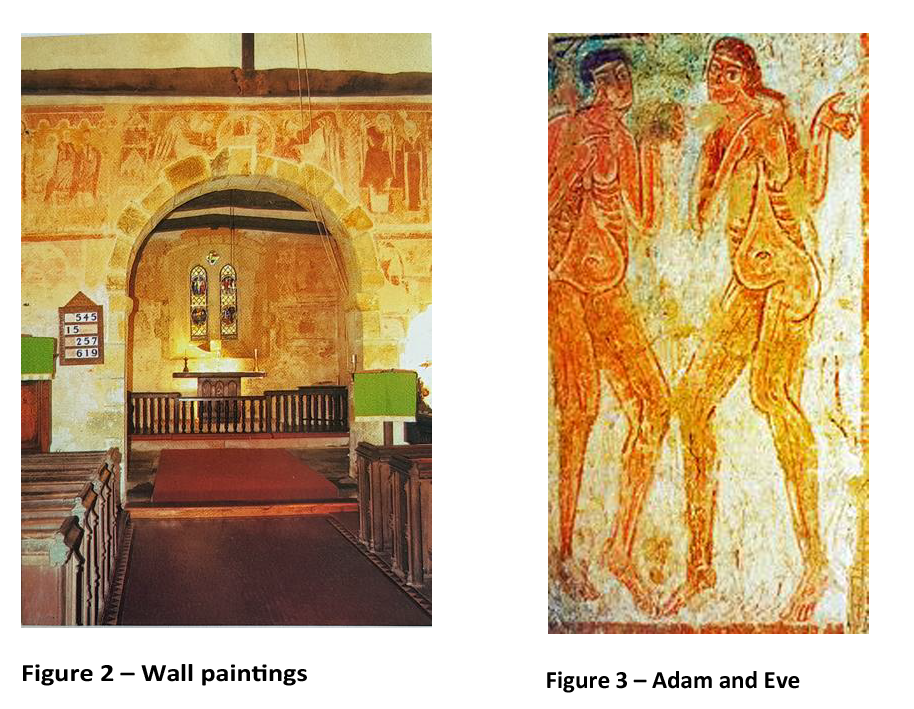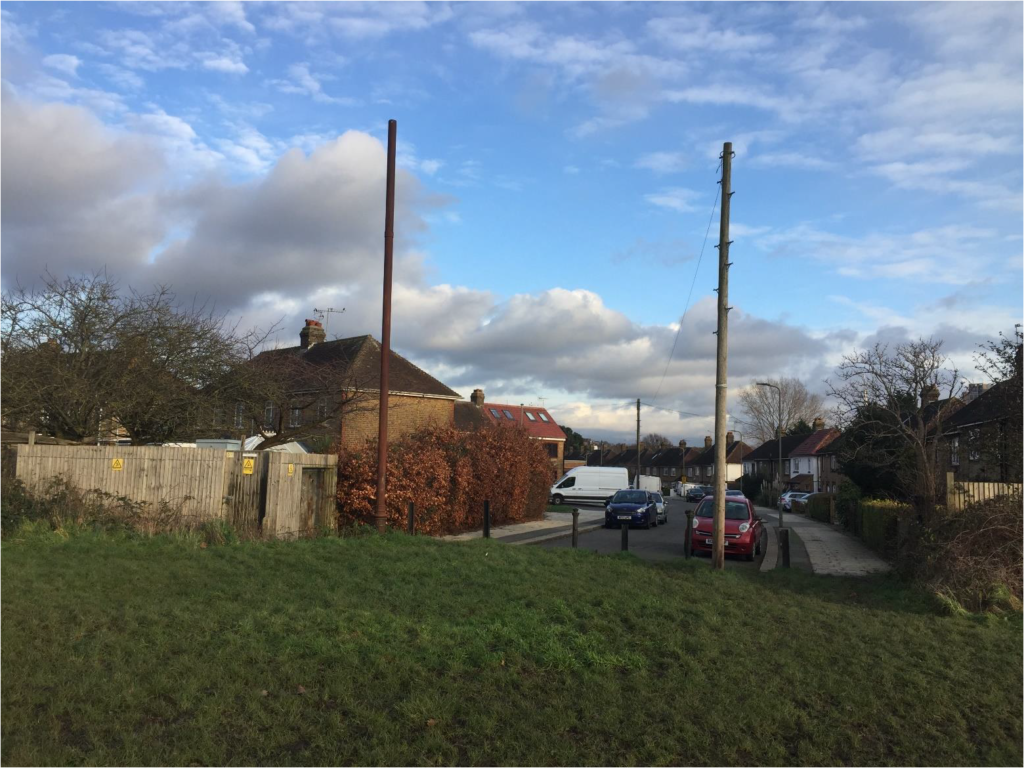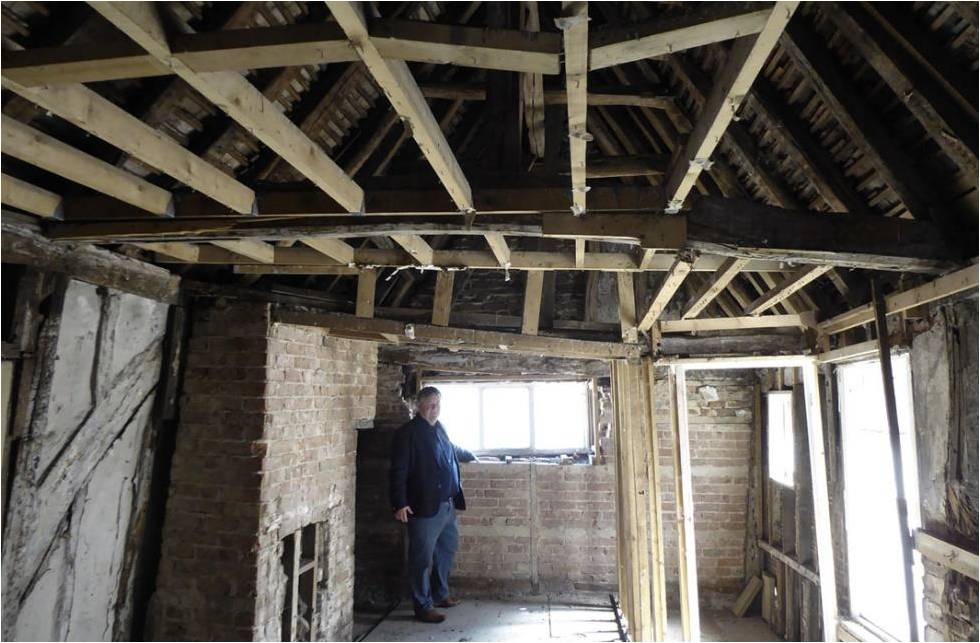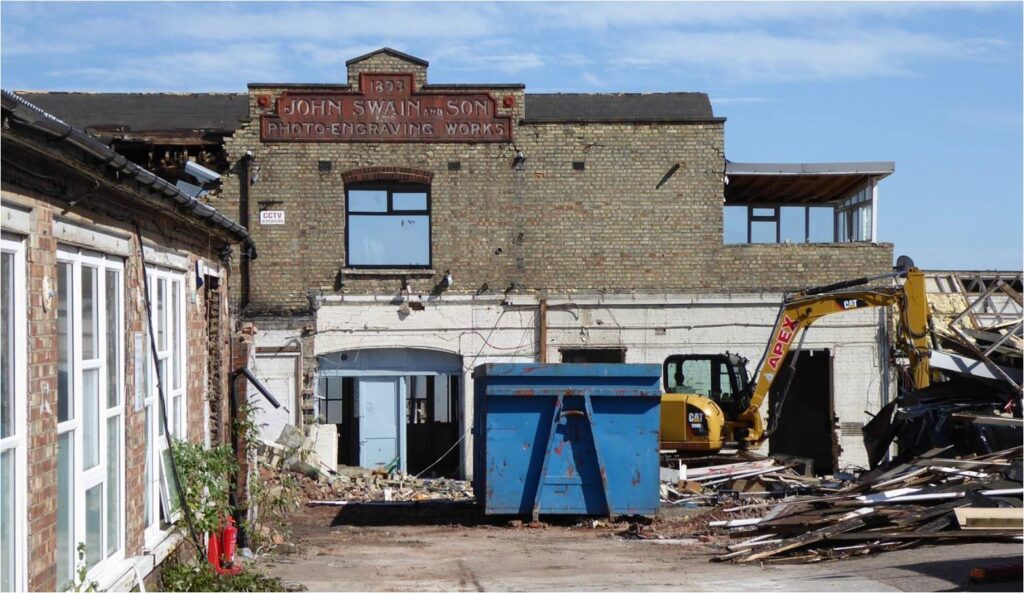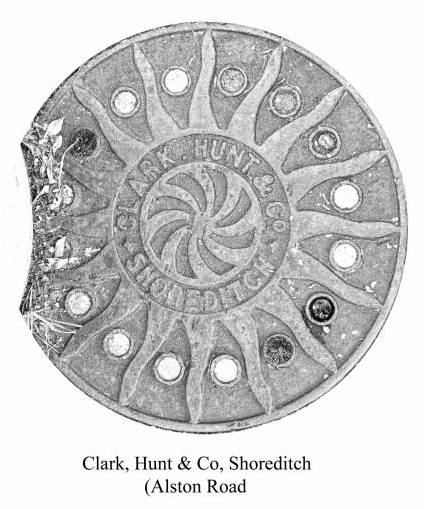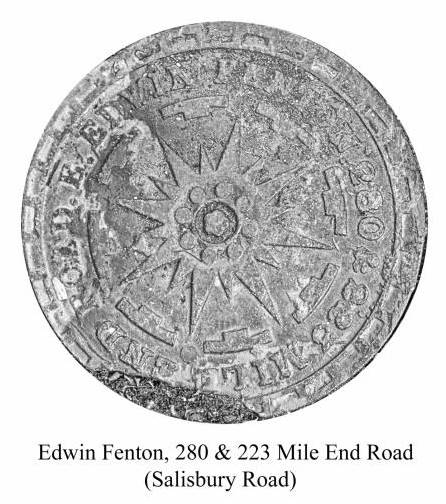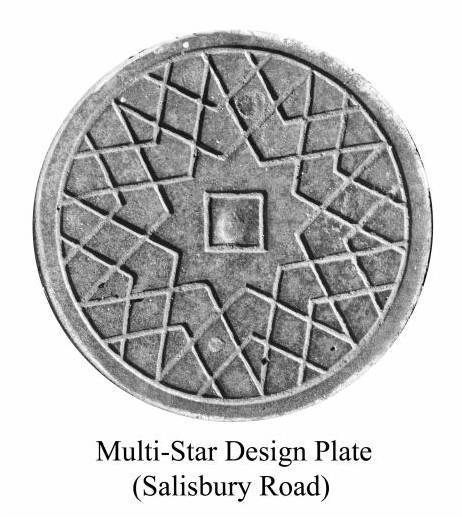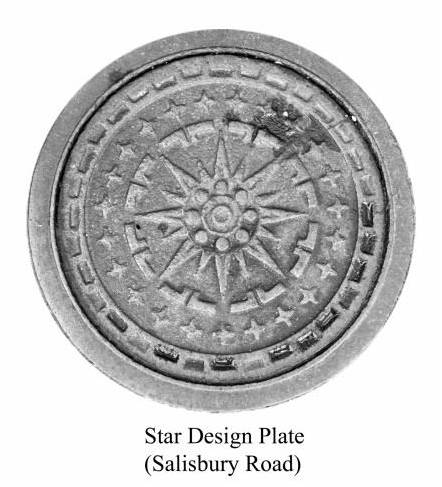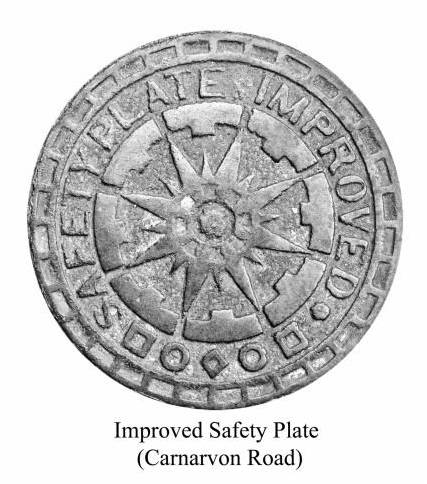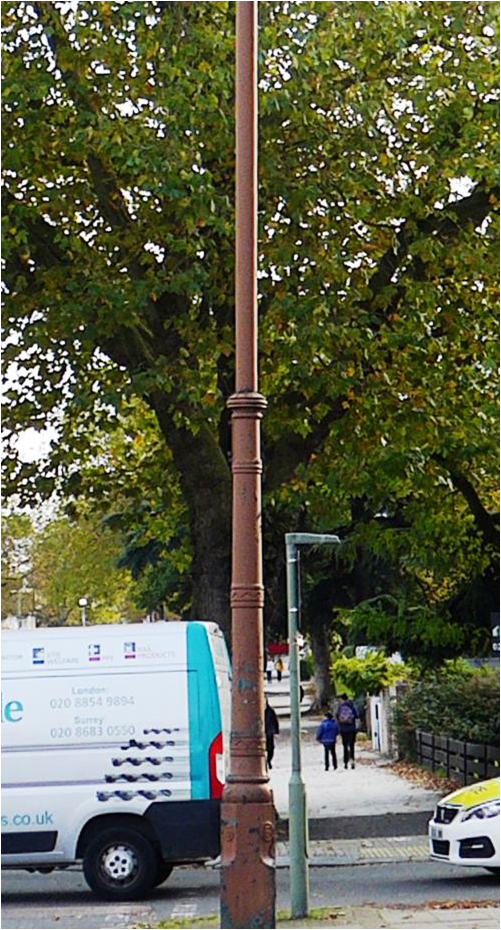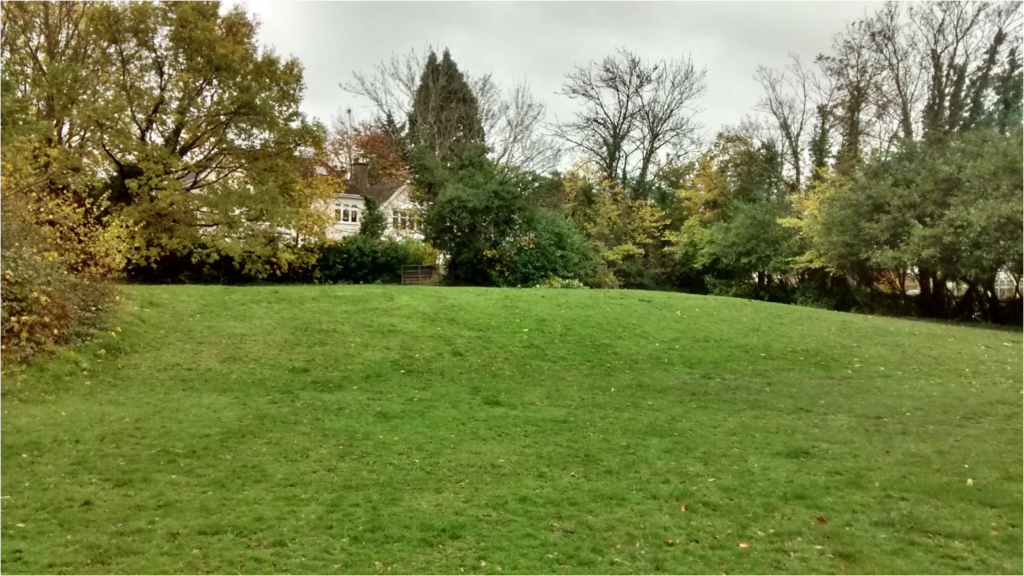
No. 606 September 2021 Edited by Stephen Brunning
HADAS DIARY – Forthcoming lectures and events
Due to the COVID-19 pandemic, until further notice lectures will be held online via ZOOM, all starting at 8 pm. Apologies to those who are unable to see online lectures.
Tuesday 12th October
Vicki Baldwin
Looe: a Story of Sea, Sand and Sardines
Tuesday 9th November
Sam Wilson
Battlefield Archaeology: Barnet 1471
It is nice to see other groups opening up, with Eric Morgan’s compilation of “Other Societies’ Events” making a welcome return to our newsletters.
———————————————————————————————————
Another Boundary Marker Dudley Miles
Following the articles in the February and March newsletters on boundary markers in Barnet,
Hugh Petrie, the Barnet Council Heritage Development Officer, has kindly informed me
of another one.
It has been discovered buried by the bridge over Mutton Brook at Henlys Corner and reinstalled in its proper place. The brook forms the boundary between the ancient parishes of Hendon and Finchley. The stone boundary marker is inscribed ‘F.P. [Finchley Parish] 1846’.
This is the oldest dated marker I have come across.
1
East Finchley HADAS dig uncovers an intriguing bottle Stewart Wild
The HADAS dig at East Finchley’s Market Place over the weekend of July 17–18 revealed a number of interesting bits and pieces, mainly Victorian – see report elsewhere. When I visited on Sunday morning our chairman showed me a small rectangular glass bottle about 4½ x 2x 1½ inches that had just been brought to light. Although any label had long gone, embossed in the glass were the words Kutnow’s Powder.
I found this intriguing as I had never heard of such a product, so when I got home, I decided to investigate and as usual Google was most helpful.
Kutnow’s Powder was marketed by a Victorian company which seems to have started in Leeds. Its registered address in London was 41 Farringdon Road, a site near Farringdon station now occupied by a post office.
The product, very popular it seems, had something in common with today’s Alka Seltzer and was effervescent. It was claimed to solve all sorts of medical problems and sold (1900–10) for two shillings and ninepence (equivalent to around £16 to £18 in today’s money) so was almost certainly a rip-off.
2
A full-page Daily Telegraph advertisement in April 1918 offered free samples and claimed that a dose of the famous powder before breakfast results in “a spring cleaning of the alimentary and urinary systems, reinforced Health and Strength and an abundance of Good Spirits.”
There was a spurious historical link to European spas and a town in Poland although it was described as “The Famous British Remedy Made in England Only”. It was proudly supplied to a number of military hospitals which was important when World War I was still raging.
https://archive.org/stream/b30477645/b30477645_djvu.txt
http://www.whatthevictoriansthrewaway.com/project/kutnows-powder-bottle/
https://www.gracesguide.co.uk/File:Im20100527Big-Kutnow.jpg
I found several similar Kutnow’s bottles on sale on eBay, mostly for around £10. Also on sale for rather more was a 1902 postcard advertising the powder by Kutnow Bros Ltd with an address at 853 Broadway, New York City.
The company had worldwide sales agents and was obviously very successful for many years. In Britain the company titled S Kutnow and Co Ltd was formally wound up in May 1965.
———————————————————————————————————
The Archaeology of Household Protection David Willoughby
We think of archaeology as being associated principally with the excavation of sites buried underground to discover information about how people lived in the past. However, there is little known branch of archaeology that is primarily associated with objects and features that are above ground level and that is the archaeology of household protection.
In the past people had a strong belief in the existence of evil spirits and witchcraft and these beliefs lingered on well into the twentieth century and perhaps beyond. They therefore felt a strong need to protect themselves, their dwellings and religious buildings from the potential harm that could done to them by these malign influences. This protection included:
‘Witch’ Bottles
Usually concealed at an opening through which an evil spirit or witch might enter (usually the hearth or chimney), these were often anthropomorphic bellarmine jars dating from the 16th-17th C. These usually contained bent nails or pins (to impale the evil spirit) and items like urine, nail clippings or hair (designed to lure the spirits to the bottle instead of to the intended victim).
3
Shoes
Worn shoes were often deposited in the chimney breast, or roof spaces of buildings. These were intended to lure an evil spirit to the shoe rather than to its former wearer. They are usually found as single shoes so that the evil spirit wouldn’t run off with them! Hoards of shoe deposits have been found with individual shoes dating from a period extending over two-hundred years.
Mummified Cats
Mummified cats are often found in chimney breasts, roof voids or even in wall spaces. Although some may be the result of a live cat crawling into a space from which it couldn’t escape, it is clear that many are found in places where they could only have been placed (hopefully whilst dead) – for example bricked up in walls. It is thought that people believed that cats being alert creatures and active at night would offer protection from evils spirits that might enter the house whilst the occupant was asleep.
Apotropaic (‘Witch’) Marks
These are marks on the wooden beams, doors etc. that are designed to offer protection. They can be found in a variety of old buildings, especially churches and older National Trust properties. The three most common types are, burn marks, daisy-wheels (hexafoils) and Marian marks but there are others.
Burn marks were once thought to have been accidentally caused by candles but research has revealed that these could only have been deliberately made (even in some cases before the building was constructed). It is thought that they either offer protection against evil spirits
4
with the flame lighting dark places where they might lurk or as a protection against lightning strikes (in the belief that lightning never strikes twice in the same place).
Daisy-Wheel Marks are thought to represent the sun with the idea that they light up dark parts of the building where evil spirits might lurk.
5
Marian Marks are especially common in churches. In the form overlapping ‘V’s, they are thought to represent the initials of the Virgin Mary so that she might be invoked to protect the building.
There are other forms of household protection and examples of household protection can be found throughout Europe, the eastern seaboard of America and in Australia. Many examples can be viewed in local museums and finds are still coming to light dating from as late as the twentieth century. It is fun looking around National Trust properties like Ightham Mote to spot the burn marks!
———————————————————————————————————
The Colindale Locomotive – ‘Trym’ Andy Simpson
This locomotive was built in 1883 by Hunslet Engine Company as their works number 287, and it is one of the two oldest surviving locomotives which they made which is preserved in Britain (Works No 243 which was built in 1880 is preserved in Spain). It was made for the Cardigan Ironstone Company (later Stewarts and Lloyds) who had opened new quarries near Corby and named it ‘Vigilant’ and delivered to them on 2 November 1883.
6
Vigilant/Trym is a typical example of a small contractor’s locomotive, built for use on the light temporary trackwork of construction sites and railway works, and weighs just 12 tons 7 cwt.
The locomotive had wooden buffer beams, wooden brake blocks and other features such as a hinged flap smokebox door which although an improvement on earlier pioneers, would have been considered outdated even at the turn of the 20th Century.
In 1903 the company disposed of its four-coupled engines and this locomotive was sold to Whitaker Brothers, a public works contractor from the West Riding of Yorkshire. The locomotive was very soon sold again, however, being purchased by Harold Arnold and Son of Doncaster, who used it in the construction of the small Embsay Reservoir near Skipton, Yorkshire, between 1905 and late 1909.
Very little is known of what the loco’s use over the next few years, other than that in 1919 the engine was rebuilt, and in 1920 sold to Nott, Brodie and Co. Ltd of Northampton. It is believed that the name Trym was acquired in about 1922 when it was one of several locomotives employed on an unemployment relief scheme – the construction of the five-mile long Bristol – Avonmouth Portway road, the River Trym being a small tributary of the River Avon which the Portway crosses on a six-arch viaduct which also spans the remains of a Roman harbour and small town, Portus Abonae (Sea Mills), seemingly abandoned by the late 4th century AD. Part of the Roman Settlement of Abonae, Non Civil Parish – 1408558 | Historic England
The completed Portway opened on 2 July 1926. See Portway, Bristol – Wikipedia
The early 1930s saw Trym under the ownership of Sir Robert McAlpine and Sons Ltd, working on the Otterspool sea wall contract for Liverpool Corporation, this being constructed on the River Mersey 1930-32.
Another change of ownership occurred in March 1940 when Howard Farrow Ltd of Hendon purchased the locomotive and it entered our particular area of interest.
Howard Farrow were quite a major civil engineering/public works contractor, working on roads, sewers/drainage and new estates, including Hemel Hempstead new town and trunk roads in the London Colney/Potters Bar area. In the early 1920s they had widened and reconstructed Station Road, Hendon, on behalf of Hendon Urban District Council, laying wood blocks on a steel-reinforced reinforced concrete foundation, as proudly shown in their advertisement in a Hendon guide at the time.
7
A second rebuild followed around 1942 when Trym was fitted with a new firebox and boiler. In 1943 Trym was used for the construction of a new marshalling yard, known as Riverside Yard, north of Exeter St. Davids station, and goods relief lines at Exeter on the Great Western Railway, to help cope with increased wartime freight traffic.
It is thought that the engine may have been on hire to the Ford Motor Co. at Dagenham, Essex, in 1954, although to date, no proof has been found to substantiate this.
In fact it is possible that the engine may not have worked at all after 1947, when one of two known published photographs of it were taken, and it stood in open storage for some 17 years on a short length of track on an embankment near Silkstream Junction and visible from the northbound tracks on the Midland main line from St Pancras to Bedford and also visible from Colindeep Lane, bearing the rather weathered painted inscription on its tanks ‘Howard Farrow Ltd Civil Engineering & Building Contractors London-Bristol’. It was kept alongside other items of contractor’s plant including a steam crane, bulldozers and scrapers.
8
As former local resident Brian Down explains;
As far as I recall you wouldn’t be able to see it from the (Colindeep Lane Railway) bridge, the entrance to Howard Farrow’s yard was approximately where the current entrance into the industrial units is, immediately to the right of North London Grammar School.
The loco was at the back of that entrance road facing towards Colindeep Lane & raised up above the road level by a few feet on some sort of platform, presumably to allow it to be moved directly onto a lorry for transportation. The Northern Line was beyond that. Photo in Colindale in 1962 –
HE 287 – Vigilant – Rocks by RailRocks by Rail (rocks-by-rail.org)
A short article and photograph appeared in the July 1963 edition of the Railway Magazine which mentioned that Trym was for sale, preferably to serious preservationists, as the firm informed the Edgware Railway Society. As a result it was purchased by David Alexander, a Quainton Railway Society member who owned several items of historic rolling stock, and after initial storage at the London Railway Preservation Society’s Skimpot Lane depot in Luton (a one-time Government Ministry of Supply cold storage Depot) from May 1964, it arrived at Buckinghamshire Railway Centre at Quainton in April 1969 and was stored partly dismantled.
Buckinghamshire Railway Centre Stockbook (brc-stockbook.co.uk)
In November 1989 Trym was sold and moved to the Northamptonshire Ironstone Railway Trust at Hunsbury Hill, where the locomotive was renamed Vigilant. In September 2010 the Northamptonshire Ironstone Railway transferred the locomotive to the Rutland Railway Museum at Cottesmore to restore the locomotive.
The locomotive moved to Cottesmore in September 2010 and by July 2011 Vigilant was back on its wheels with overhaul underway. Replacement seasoned oak buffer beams were cut to size, drilled and fitted. The boiler overhaul is now under way. The locomotive remains at the Rocks by Rail – the Living Ironstone Museum at Cottesmore as the Rutland Railway Museum was renamed in 2012.
In January 2020 it was revealed that the locomotive had been acquired by David Buck. At the same time it was stated that it was hoped that the locomotive would be back in steam soon. The owner also indicated that he intended that it would move to his private railway but would not stay there as he wanted it to move around other railways and be seen more widely.
9
The Festival of Archaeology is now over for 2021, with a fantastic two weeks of celebration and over 400 events!
HADAS was represented again this year over the weekend of 17th/18th July with a dig at Market Place, East Finchley. You can read about the history of the area in last month’s newsletter.
———————————————————————————————————
Other Societies’ Events Compiled by Eric Morgan
Sunday 5th September 12 noon to 6pm. East Finchley Festival. Cherry Tree Wood, off High Street, East Finchley N2. Lots of stalls including the Finchley Society. HADAS will have a stand here as well as the North London branch of the U3A and the Friends of Cherry Tree Wood (with Roger Chapman of HADAS). Entertainment, food and a bar. FREE entry.
Sunday 5th September 11am to 3pm. COLAS. Family Archaeology Day. Fulham Palace. Bishops Avenue SW6 6EA. Displays and activities. See website www.colas.org.uk.
Saturday 11th & Sunday 12th September, 10am to 4.30pm. Barnet Medieval Festival. Barnet Elizabethans RFC, Byng Road, Barnet EN5 4NP. A living history camp, combat and weaponry displays, battle demonstrations, medieval traders and activities. Local organisations including HADAS hope to have a stand here. Food, drink, stalls and a bar. Entry £5.
Tuesday 14th September 1-2pm. Society of Antiquities Queenship in Early Modern English? Live streamed and open to anyone to join online. FREE but donations appreciated. See website www.sal.org.uk/events for topics and speakers in this lecture series.
10
Saturday 18th September 12.30-5.30pm. Highgate Fair in the Square. Pond Square, Highgate Village N6 and in South Grove. Lots of stalls including Highgate Society and Highgate Literary & Scientific Institution. Also crafts, gifts, clothes, jewellery, food, drink, plants and books. FREE entry.
Tuesday 21st September 1pm. Mill Hill Historical Society. A guided tour of St Paul’s Cathedral lasting 90 minutes. Organised by Jenny Wardle. Meet at the top steps, St Paul’s Cathedral, Ludgate Hill EC4M 8AD for a 1.15pm tour. Members of MHHS £20, non-members £22. Book by Monday 6th September. Please send cheque to Julia Haynes, 38 Marion Road, London NW7 4AN. Cheques to be made payable to Mill Hill Historical Society. Contact Julia on 07803 892496 with details or email bookings@millhill-hs.org.uk.
Sunday 26th September 3pm. Finchley Society. The Finchley War Memorial in the grounds of Finchley Memorial Hospital, Granville Road (corner of Bow Lane) N12. The new war memorial is to be unveiled at a ceremony to be held at 3pm. You can search online at www.barnetwarmemorials.org.uk or www.finchleysociety.or.uk.
PLEASE CHECK WITH THE SOCIETY OR ORGANISATION BEFORE SETTING OUT IN CASE OF ANY CHANGES OR CANCELLATIONS.
11
With many thanks to this month’s contributors:
Dudley Miles, Eric Morgan, Peter Pickering, Andy Simpson and David Willoughby
************************************************************************************
Hendon and District Archaeological Society
Chairman Don Cooper 59, Potters Road, Barnet, EN5 5HS
(020 8440 4350) e-mail: chairman@hadas.org.uk
Hon. Secretary Vacancy
e-mail: secretary@hadas.org.uk
Hon. Treasurer Roger Chapman 50 Summerlee Ave, London N2 9QP
(07855 304488) e-mail: treasurer@hadas.org.uk
Membership Sec. Stephen Brunning, Flat 22 Goodwin Court, 52 Church Hill Road,
East Barnet EN4 8FH1 (020 8440 8421)
e-mail: membership@hadas.org.uk
Web site: www.hadas.org.uk
12
